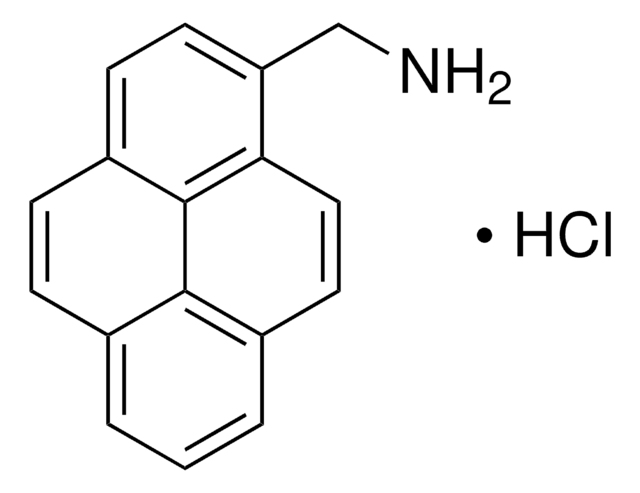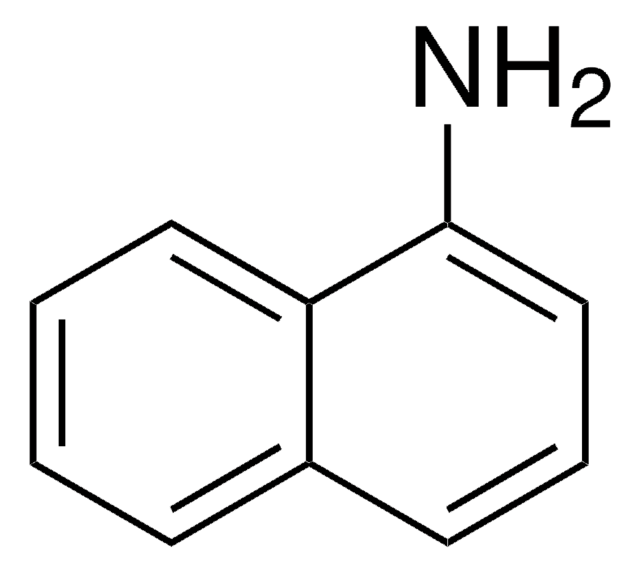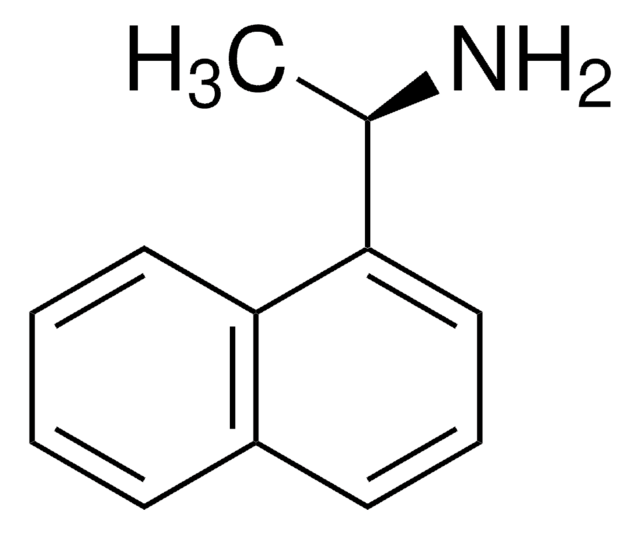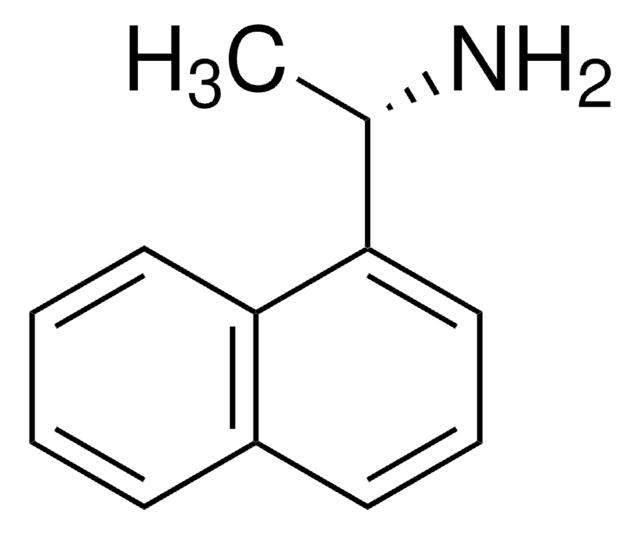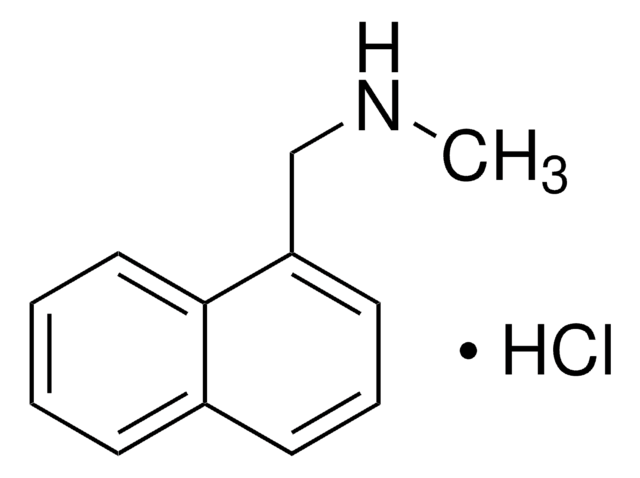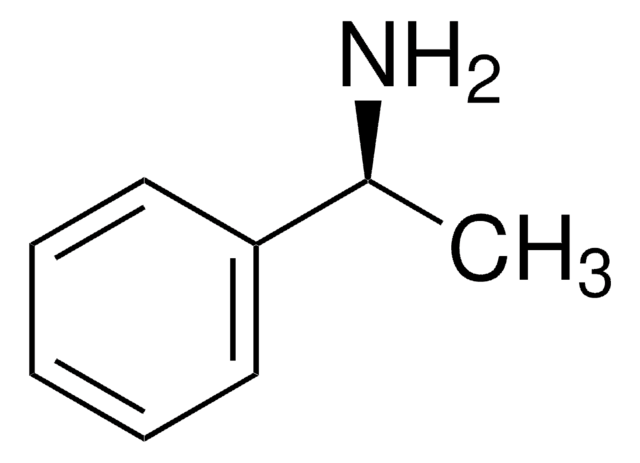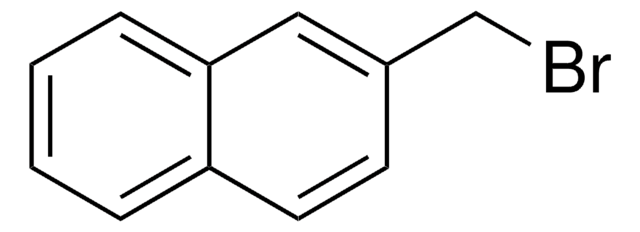127035
1-Naphthylmethylamine
97%
Sinonimo/i:
1-(Aminomethyl)naphthalene, 1-Naphthalenemethylamine
About This Item
Prodotti consigliati
Livello qualitativo
Saggio
97%
Forma fisica
liquid
Indice di rifrazione
n20/D 1.643 (lit.)
P. eboll.
290-293 °C (lit.)
Densità
1.073 g/mL at 25 °C (lit.)
Stringa SMILE
NCc1cccc2ccccc12
InChI
1S/C11H11N/c12-8-10-6-3-5-9-4-1-2-7-11(9)10/h1-7H,8,12H2
NVSYANRBXPURRQ-UHFFFAOYSA-N
Informazioni sul gene
rat ... Adra2a(25083)
Cerchi prodotti simili? Visita Guida al confronto tra prodotti
Descrizione generale
1-Naphthylmethylamine increases the induced circular dichroism (ICD) magnitude exhibited by Poly[(4-carboxyphenyl)acetylene]. It forms carbamate by reacting with monomethoxypoly(ethylene glycol) succinimido carbonate (mPEG-SC).
Applicazioni
- Photoluminescence Modulation: A study demonstrates the modulation of photoluminescence in Ruddlesden-Popper perovskite using phase distribution regulation, revealing potential applications in optoelectronic devices. 1-Naphthylmethylamine plays a critical role in enhancing the material properties for improved device performance (Zhao et al., 2023).
- Perovskite Light-Emitting Diodes: Research highlights the dimensional tailoring of quantum wells through ultrahigh vacuum annealing to enhance the efficiency of perovskite light-emitting diodes. This process utilizes 1-Naphthylmethylamine to improve the interlayer electronic properties and device stability, contributing significantly to advancements in LED technology (Yu et al., 2020).
Avvertenze
Warning
Indicazioni di pericolo
Consigli di prudenza
Classi di pericolo
Eye Irrit. 2 - Skin Irrit. 2 - STOT SE 3
Organi bersaglio
Respiratory system
Codice della classe di stoccaggio
10 - Combustible liquids
Classe di pericolosità dell'acqua (WGK)
WGK 3
Punto d’infiammabilità (°F)
235.4 °F - closed cup
Punto d’infiammabilità (°C)
113 °C - closed cup
Dispositivi di protezione individuale
Eyeshields, Gloves, type ABEK (EN14387) respirator filter
Scegli una delle versioni più recenti:
Possiedi già questo prodotto?
I documenti relativi ai prodotti acquistati recentemente sono disponibili nell’Archivio dei documenti.
I clienti hanno visto anche
Il team dei nostri ricercatori vanta grande esperienza in tutte le aree della ricerca quali Life Science, scienza dei materiali, sintesi chimica, cromatografia, discipline analitiche, ecc..
Contatta l'Assistenza Tecnica.
